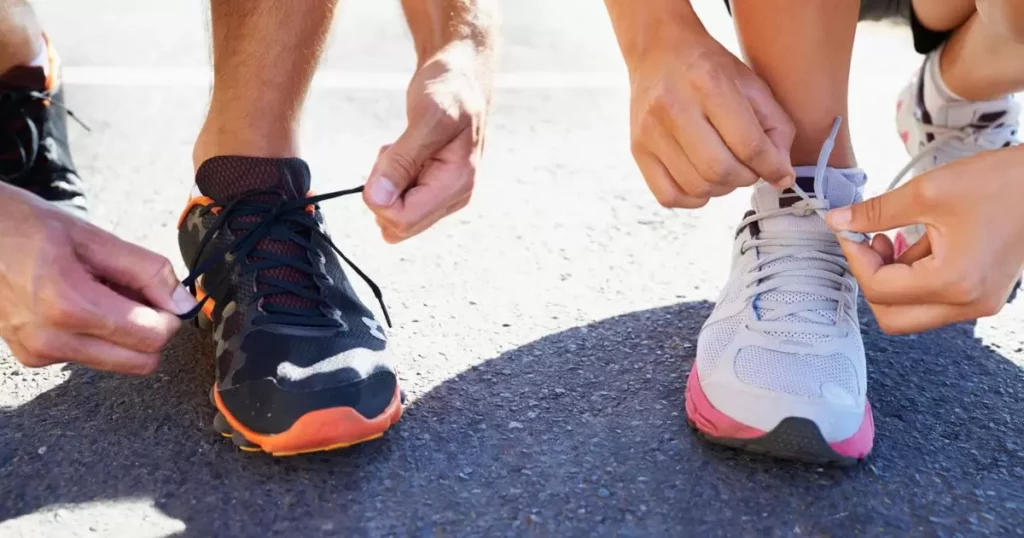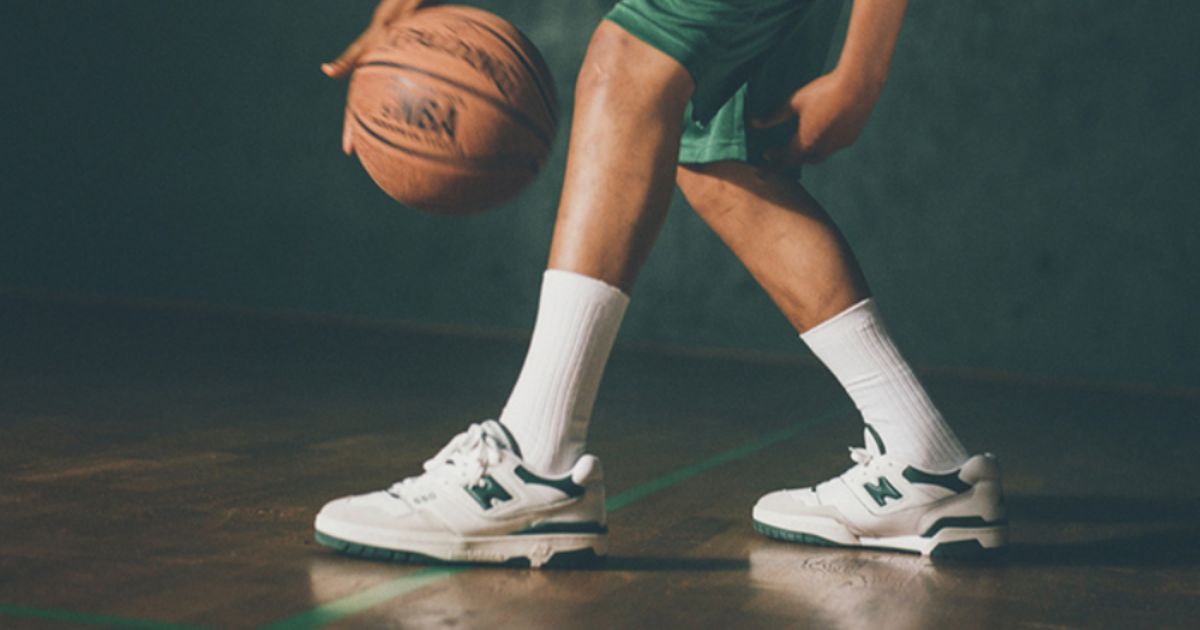Understanding the ideal fit of basketball shoes is pivotal for players aiming to optimize performance and prevent injuries. “How tight should basketball shoes be?” is a fundamental query that influences comfort, support, and agility on the court, impacting a player’s overall game and foot health.
The fit of basketball shoes is a delicate balance. Too loose, and the risk of ankle rolls or instability increases; too tight, and circulation and natural foot movement is compromised. Finding the perfect snugness is crucial a blend of support, comfort, and avoiding constriction for top-tier performance.
Balancing the snugness of basketball shoes involves a few key considerations. The fit should secure the foot to prevent slippage while allowing enough room for natural movement. Optimal snugness varies per individual preference; some prefer a tighter fit for stability, while others prioritize a bit more room for comfort without sacrificing support. Regularly assessing the fit and comfort during play is essential for peak performance and foot health.
Understanding Foot Mechanics in Basketball
| Section Heading | Summary |
| Understanding Foot Mechanics | Importance of foot movements in basketball and the need for adequate support and freedom. |
| Finding the Right Balance | Balancing support and comfort for the ideal basketball shoe fit. |
| Impact of Incorrectly Fitted Shoes | Consequences of ill-fitted shoes on performance and potential injuries. |
| Tips for Achieving Ideal Fit | Practical advice for choosing the right basketball shoes. |
| Player Preferences and Variations | Varied preferences based on player positions and style. |
| Professional Insights | Athlete perspectives emphasize the importance of a proper fit. |
| Myths and Misconceptions | Dispelling common myths about basketball shoe tightness. |
| Conclusion | Summarizing the crucial importance of the right shoe fit. |
In basketball, your feet do a lot of work! They help you jump, run, stop, and pivot. Understanding how your feet move is crucial. When you play, your feet need support and freedom. Basketball shoes should let your toes move but also keep them safe and secure. Your arches (the middle part of your foot) help with shock absorption and balance. Your heels need stability to avoid injury. The way your feet hit the ground affects how you move. Good shoes for basketball support all these movements. They should fit snugly but not too tight, allowing you to move comfortably while keeping you safe. Knowing how your feet work and choosing the right shoes can improve your game and prevent injuries.
Finding the Right Balance: Support vs. Comfort
Choosing the perfect basketball shoe fit means finding a balance between support and comfort. Support means your shoes keep your feet stable, preventing injuries like ankle rolls. But if they’re too tight, it might limit how your feet move. Comfort is about feeling good while playing. It’s essential to have enough room for your toes to wiggle but not too much space that your foot slips. Are Jordan 4s basketball shoes? The right balance keeps you safe and comfortable. To find it, try different sizes and styles. Some players like a snug fit for extra stability, while others prefer a bit more room. Always check if your shoes feel right during play. Your feet will thank you, and you’ll perform your best on the court.
Impact of Incorrectly Fitted Basketball Shoes
Wearing basketball shoes that don’t fit right can cause many problems. If they’re too loose, you might trip or roll your ankle. If they’re too tight, your feet might hurt, and it could affect how you play. Incorrectly fitted shoes may lead to blisters, pain, or even injuries like sprains. They might make you uncomfortable and distract you during the game. Not having the right fit could also affect your running or jumping, making it harder to move around the court. It’s important to find the best fit to avoid these issues. Well-fitted shoes offer support and comfort, and help you move freely, enhancing your game and reducing the risk of getting hurt.
Tips for Achieving the Ideal Basketball Shoe Fit
- Measure Your Feet: Start by knowing your correct shoe size. Measure both feet and choose the size that fits the larger foot for better comfort.
- Try Them On: Always try on basketball shoes before buying. Walk, jump, and ensure there’s about a thumb’s width between your longest toe and the shoe.
- Consider Sock Thickness: Wear the socks you plan to use while playing. This helps find the right fit, especially if you wear thicker socks for cushioning.
- Focus on Support: Ensure the shoes hold your feet snugly to prevent slipping but not too tight to cut off circulation or hurt your toes.
- Ask for Professional Advice: Seek guidance from store staff or experts if unsure. They can provide insights on specific brands or models that suit your playing style and foot shape.
Player Preferences and Shoe Fit Variations

Basketball players prefer different shoe fits based on their needs. Some like a snug fit for better stability and support during quick movements. Others prefer a bit more room in the toe box for comfort. High-profile players often collaborate with shoe designers to create custom fits. Guards might opt for lighter, low-cut shoes for speed and agility, while big men might prefer high tops for ankle support. It’s important to consider personal comfort without compromising support to prevent injuries. Finding the right fit involves trying on various sizes and styles, walking, jumping, and making sudden movements to assess comfort and security. What works for one player might not work for another, making individual preference a key factor in choosing the best-fitted basketball shoes for optimal performance on the court.
Professional Insights: Athlete Perspectives on Shoe Fit
Athletes stress how essential the right basketball shoe fit is. They want a snug fit without squeezing too hard. Too loose, and it’s like sliding in socks—bad for quick moves. Tight shoes can hurt, pinch, and mess with blood flow, causing discomfort. Every player feels different about fit; some need tightness for stability, while others want a bit more room. Testing shoes before buying helps ensure the best fit. Players know that a good fit means better support, reducing injuries, and boosting performance. They say it’s not just about comfort; it’s about finding a balance between snugness and flexibility. Experts and athletes agree: that the perfect fit is crucial for dominating the court without foot pain.
- Common Myths and Misconceptions about Basketball Shoe Tightness
- Myth: “Tighter shoes mean better support.” Fact: While snugness is essential, excessively tight shoes can restrict blood flow and cause discomfort or injury. Myth: “One size fits all.” Fact: Each player’s foot shape and size differ; finding the right fit is personal. Myth: “Breaking in tight shoes is normal.” Fact: Shoes should feel comfortable from the start. Myth: “Loose shoes don’t offer support.” Fact: Too loose is risky, but a slight give can be comfortable without compromising support. Myth: “Only pros know the right fit.” Fact: Everyone can learn to find their ideal fit by considering comfort, support, and minimal movement inside the shoe. Myth: “Old shoes are just as good.” Fact: Over time, shoes lose support and cushioning, impacting performance and safety.
Conclusion
getting the right fit for basketball shoes is super important. It’s not just about comfort but also about keeping you safe on the court. You need a balance – not too tight and not too loose – to play your best game.
Remember, everyone’s feet are different, so finding the perfect fit is personal. Tight shoes can cause pain or injuries, while loose ones might make you less stable. It’s crucial to feel snug but not squeezed. Don’t fall for the myth that tight shoes mean better support – they might actually harm your feet. And it’s not just about pros; everyone can find their ideal fit by focusing on comfort, support, and having just enough room to move inside the shoe.
Also, keep in mind that old shoes might not give you the support you need. Over time, they lose their cushioning, affecting your performance. Always check your shoe’s fit, ensuring they’re snug but not too tight, and replace them when they start to wear out. Finding the right basketball shoe fit isn’t just about feeling good – it’s about playing safely and giving your best performance on the court.



